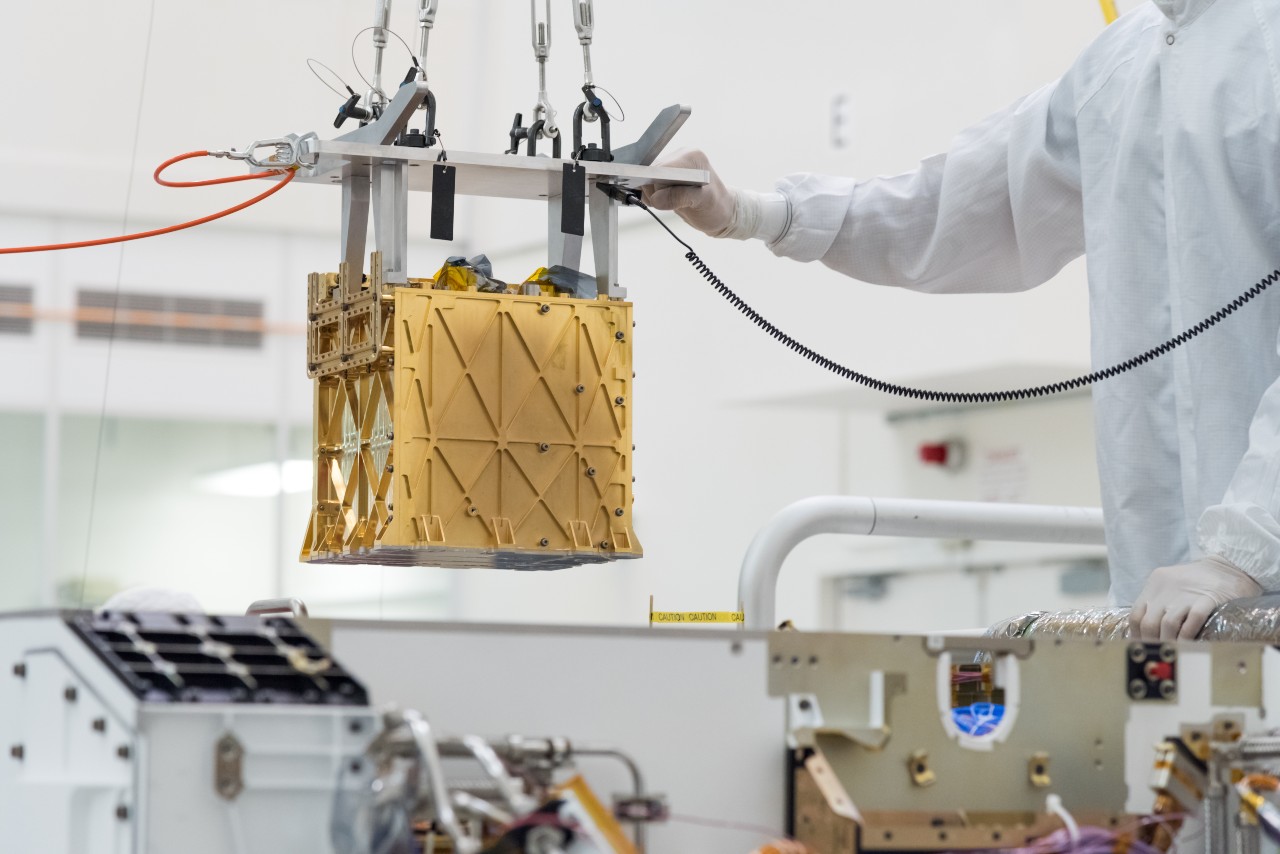Please check the information entered!
- Please check the information entered
A log-in email has been sent to your email address
Forgot password? Reset password

MOXIE being installed in the Perseverance rover. Image courtesy of NASA/CalTech
NASA’s Perseverance Mars rover continues to notch up world firsts, now becoming the first device in history to extract oxygen from the Martian Planet.
On April 20, Perseverance’s toaster-sized Mars Oxygen In-Situ Resource Utilization Experiment (MOXIE) converted carbon dioxide from Mars’ atmosphere into about 5.4 grams of oxygen, enough for an astronaut to breathe for 10 minutes. The feat is truly remarkable as it could one day allow astronauts to live off the land on the Red Planet.
At present, any crewed mission to Mars would require astronauts to have a long stay on the planet’s surface before being able to make the return. That’s because a return journey requires certain planets to be in the right position before one can be made. Unfortunately, waiting on Mars for this to happen would require huge amounts of rocket fuel and supplies.
It takes 7 tonnes of rocket fuel and 25 tonnes of oxygen to lift four astronauts from the surface of Mars into orbit. Each astronaut also needs a tonne of oxygen per year to live. It isn’t practical to transport that amount of supplies from Earth, simply because the rocket fuel and oxygen required to do so makes it a non-starter.
The alternative – which Perseverance has taken us one step closer to achieving – is to harvest resources on Mars.
The good news is that the Red Planet’s atmosphere is different to Earth’s, made up of one carbon atom and two oxygen atoms. With the right equipment and enough power, it could be practical to generate oxygen from Mars’ CO2.
Perseverance’s MOXIE unit uses a HEPA filter to filter the Martian atmosphere, before heating it to
1,470 °F (800 °C) with a scroll compressor. At this temperature, a ceramic oxide splits the carbon dioxide into oxygen and carbon monoxide via a process called solid oxide electrolysis.
“I've been using the expression ‘a small breath for man, a giant leap for humankind,'” said MIT’s Michael Hecht, the principle investigator for MOXIE.